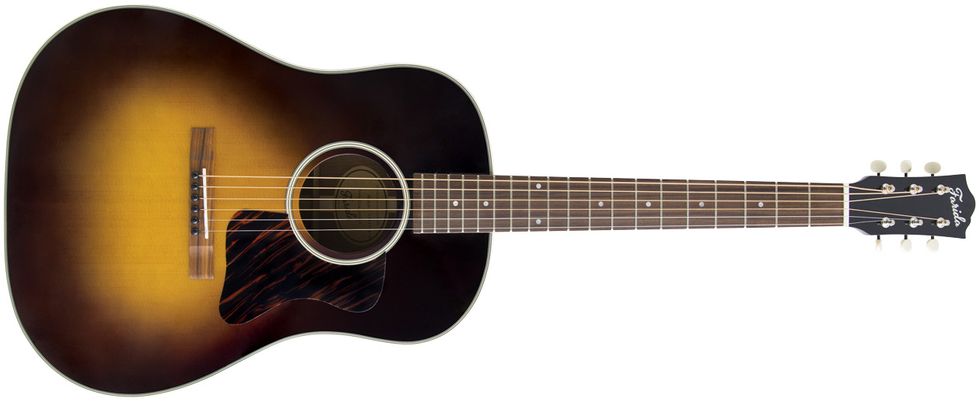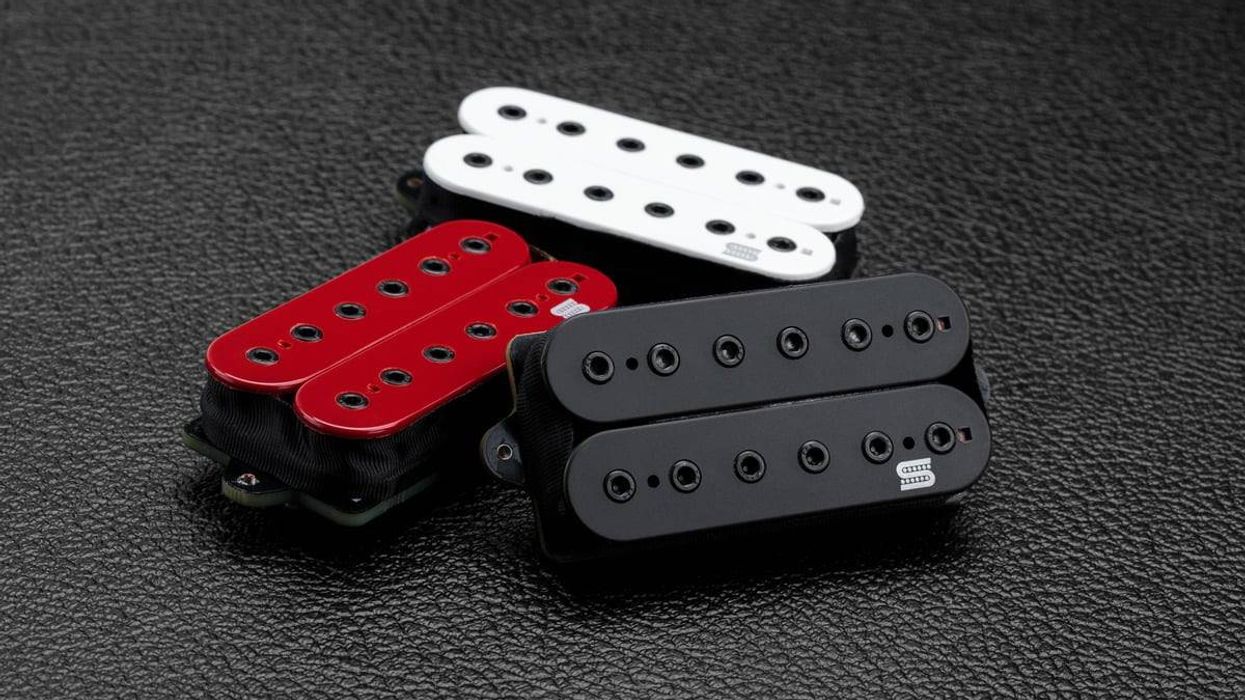RatingsPros:Superb playability. Spacious fretboard. Cool tone surprises for a dread. Cons: Brash voice may turn off slope-shoulder purists. Bottom end sounds weak in some situations. Street: $774 Farida OT-65 faridausa.com | Tones: Playability: Build/Design: Value: |
If there’s a prettier flattop than a slope-shouldered dreadnought, I have yet to lay eyes on it. Gibson, of course, built the first and set the standard with the J-45. In the years since its introduction, that guitar’s perfect proportions, beautiful body contours, and sonic stew of husky, mellow, massive, and earthy spruce and mahogany tones made the J-45 a much-copied template for builders. Farida’s OT-65 X Wide VBS is one of the latest such tributes to the J-45. But it’s also defined by a few important deviations from Gibson’s standard—most notably a 1 3/4" nut (the “wide” in the model name) and a 25 1/2" scale—that make it a very different sounding and playing slope shoulder.
Kalamazoo Fusion
The China-built OT-65, is part of a Farida line that, refreshingly, focuses on a few essential vintage-style flattop types. The quality of construction suggests that this focus has paid off. The guitar is almost flawless inside and out. Frets are carefully seated and contoured at the edges. Intonation is excellent. And though the guitar feels fast and the action is relatively low, there’s still plenty of room to attack the guitar with a flatpick without fearing fret buzz.
The Farida employs several mid-20th century J-45 design elements to create a very vintage-styled whole—particularly the three-on-a-plate tuners with ivoroid tuning pegs, dot markers, and an unbound neck, which all echo the classy and understated beauty of a vintage Gibson. Other elements, like the simple Martin-style rectangle bridge, two-pinstripe binding and rosette, and narrow, almost Epiphone-like headstock, are cool and distinctive departures from Gibson design dogma.
Both the spruce top and the mahogany back and sides are fashioned from high-quality pieces of lumber. And the mahogany back in particular is striking in terms of depth and figuring. The pao ferro fretboard also has lovely character, and though it’s distinctly lighter in color when placed alongside a rosewood fretboard, it would probably be hard to tell the difference at a glance. The finish is carefully applied everywhere on the guitar, save for a just perceptible heaviness on the soundhole side of the bridge and around the neck joint. That, however, was the only plainly visible shortcoming in an otherwise near-perfect build.
Extra Dimensional
On a J-45, the 24 3/4" scale and 1.69" nut width contribute significantly to its tone profile and feel. The shorter scale offers an elastic, bend-conducive playability, warm, deep overtones, and strong fundamentals. The narrower neck, meanwhile, makes chording easy for many players. Those who like a J-45 for its particular brand of playability might be surprised by how different the Farida feels under the fingers.
The fretboard is considerably more spacious, and the old truth about 1 3/4" necks lending themselves to fingerstyle is affirmed here. Chord melody maneuvers feel effortless. And the relatively low action and extra string-to-string distance do much to reduce the slop in chord transitions a narrower fretboard can induce. If you have smaller hands, the wider fretboard may be less fun for sustained chording. But in general, the Farida’s very nice setup and action do much to relieve chording fatigue.
Long Scale, Toppy Tone
The Farida’s other major deviation from Gibson slope-shoulder convention, the 25 1/2" scale, is likely to be more polarizing—at least if you favor the toasty, mellow side of a J-45’s tone equation. On just about any 25 1/2"-scale acoustic you’re likely to hear more note-to-note articulation, more midrange emphasis, and more string-to-string balance than you would on a shorter-scale instrument. These guidelines definitely apply to the Farida. Under heavy strumming, the midrange is strong, boisterous, and downright growly. And when combined with the articulate output from the 1st and 2nd strings, the strong high-mid contributes to a tonal sum that’s quite bright for a dreadnought. How you put this tone profile to work will do much to determine how well the Farida suits your playing style.
Not coincidentally, perhaps, given the wider neck, the Farida’s voice is a great fit for fingerstyle. Fingerstyle players who rely on deep, resonant, pianistic bass response for their expression may miss some of the low-end that the Farida lacks in comparison to other dreads. On the other hand, the guitar’s superb ability to articulate and lend definition to melodic passages on the 1st through 4th strings might thrill and inspire players who rely on counterpoint or pronounced, ringing high strings for the melodic backbone of their compositions and songs. Some of these same qualities make the Farida a great flatpicking guitar. And though it lacks some of the bottom-end thump bluegrass and country flatpickers favor, it sounds and feels great for slow, vibrato-inflected leads against soft accompaniment.
If there’s one weak spot in the Farida’s bag of tricks, it’s the tendency to sound brash under heavy strumming—a characteristic that’s the virtual opposite of the J-45 and unusual in a mahogany-backed guitar of this size. This isn’t an across-the-board deficiency by any means. The Farida sounds lovely in strumming situations where you use a feathery touch and a thin pick, and it’s easy to imagine stacking the Farida’s voice on top of a more robust dread for a rich composite rhythm picture in ensembles or overdubbing situations. Aspiring Neil Youngs, or any one else that relies on a heavy picking hand, may want to consider other options.
The Verdict
Farida’s OT-65 X Wide VBS is a well-built and versatile dreadnought. With its mid-heavy, and occasionally brash voice, it’s probably not the best option for a J-45 purist on the prowl for an affordable alternative. But if you’re the kind of player who loves a slope shoulder’s style, but doesn’t relate to a J-45’s mellow mahogany tones and short scale, the Farida might be the perfect fix.




















